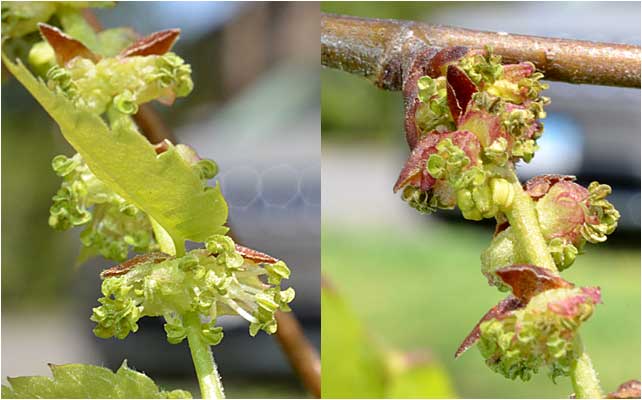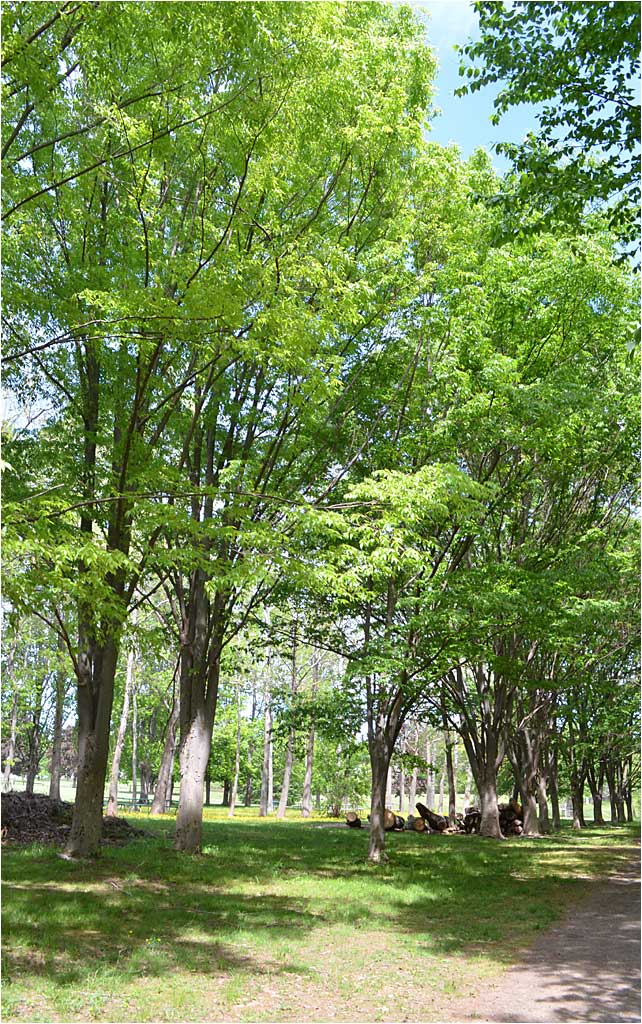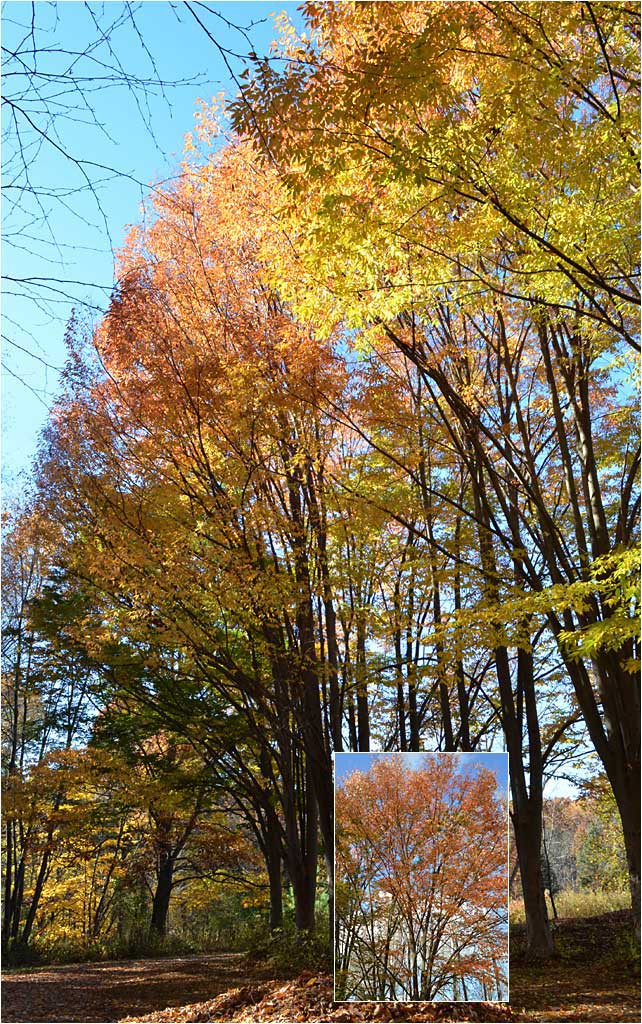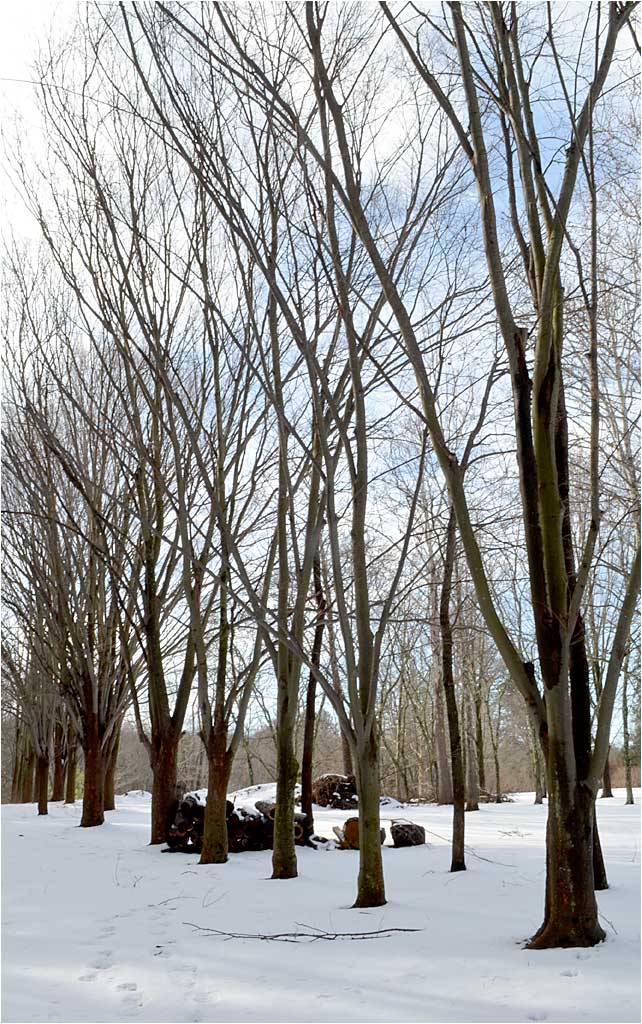40. JAPANESE ZELCOVA ROW
Zelcova serrata

Along the south path of The Grove, there is a line of 24 mature, stately, and attractive trees. These are Japanese Zelcova, pictured here in Spring, and they are an essential part of any Westmoor Arboretum tour. Notice the vase-type shape of the branches. This is similar to the most popular street tree in the Northeast in 1900, the American Elm. When so many of the elms died of Dutch Elm disease from 1905 on, there was a mad scramble to find a replacement. We do see some row trees in this area in the 1934 aerial photos, but some of them would have had to be transplanted to make the formation we see today.
4 SEASON, BARK

The flowers, being small and greenish/white, are often described by botanists as inconspicuous or not showy. Perhaps a closer look is in order.
SPRING FLOWERS, M & F

The flowers are described as "TRI-MONECIOUS", with "male, bisexual (sic perfect), and female flowers in regular sequence on a short shoot" (University of Delaware, Zelcova serrata). This arrangement is certainly not typical of tree flowers, and the timing of producing and being receptive to pollen must be challenging, but Zelcova has bested the challenge.
SUMMER

The broad, dense canopy of Zelcova provides deep shade during the summer months, strengthening the argument the trees were brought over to replace American Elms. In the early 1900s, before air-conditioning became widespread, trees provided valuable shade - not just aesthetic and ornamental value.
SUMMER, BARK & LEAF

The bark is distinctive and partially exfoliating to show reddish inner bark. The leaves are serrated (scientific name "serrata") and attractive. The bark is easy to see, the leaves a bit more challenging as the Zelcovas are fairly tall. The ones toward the western end of the row have the lowest hanging branches, but even with those it will be difficult to find the...
FRUIT, JAPANESE ZELCOVA

Nestled behind the leaves are the late summer Fruit of the Japanese Zelcova. These are very small, but prolific. they are described as "wingless drupes". A drupe is the technical term for the combination of an inner hard seed surrounded by a fleshy part and outer covering.
FALL

Fall foliage of Zelcova is worth a visit to the Arboretum all by itself. Prime time for the show is very late October or the first week of November. This photo taken 10/29/2022. Inset photo taken 11/7/2022.
WINTER

The uplifting branches are clearly noted without leaves, and their similarity to American Elm even more pronounced.